Physical Address
304 North Cardinal St.
Dorchester Center, MA 02124
Physical Address
304 North Cardinal St.
Dorchester Center, MA 02124
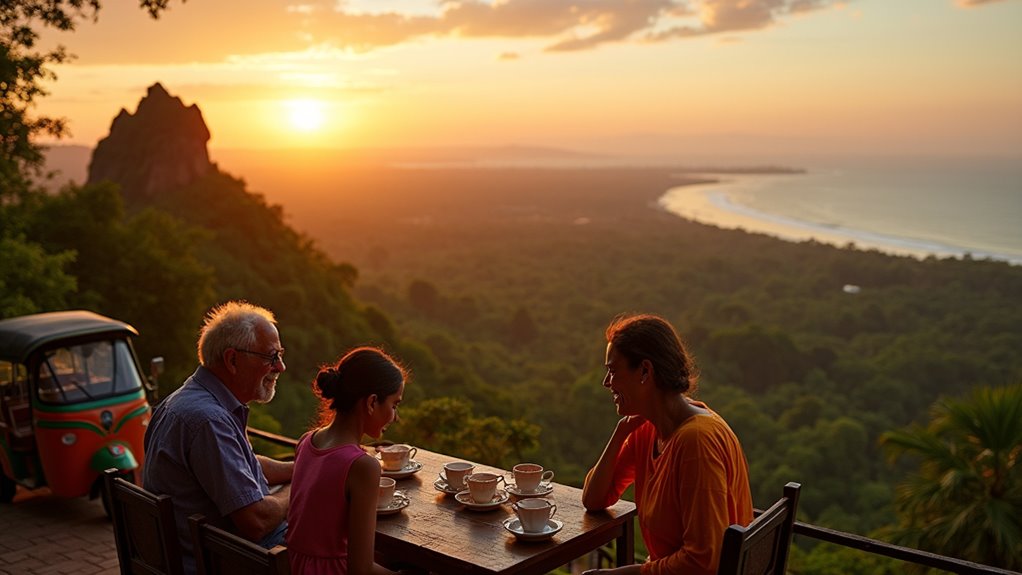
In Sri Lanka's teardrop-shaped paradise, travelers find surprising safety amid stunning landscapes, but certain precautions remain essential.
Sri Lanka is generally safe for travelers with a global safety index of 57.9. You’ll find low terrorism risk and improving economic conditions, though you should remain vigilant about petty crime in crowded areas. Road safety requires caution, with high accident rates especially in April and December. Political stability has improved following the 2024 election. Focus your travels on secure regions like Colombo, Kandy, and the Cultural Triangle for the safest experience. The following guide offers essential insights for your journey.
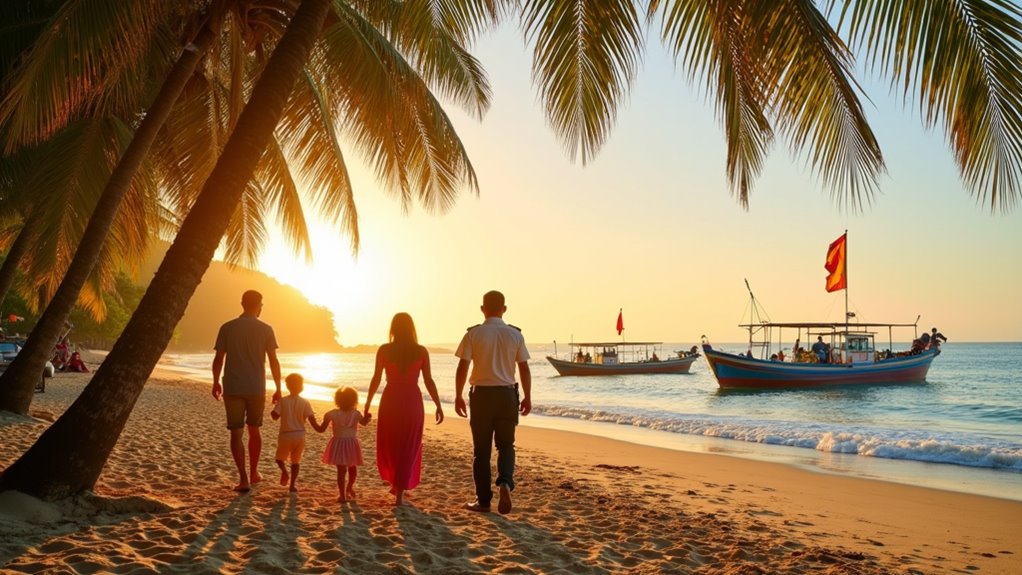
While Sri Lanka enjoys a relatively favorable safety profile on the global stage, it’s important to understand its specific security landscape before traveling. Ranked 59th globally with a safety index score of 57.9, the country presents a reasonably secure environment for visitors.
Travelers to Sri Lanka enjoy moderate safety, though understanding local security dynamics remains essential for a worry-free visit.
You’ll find Sri Lanka maintains a low terrorism impact, ranking 100th out of 163 countries with a zero score in the 2025 Global Terrorism Index. No terrorist attacks have been reported in recent years, indicating regional stability.
Authorities regularly conduct security operations, including sweeps at Bandaranaike International Airport, to guarantee visitor safety.
Though safer than many destinations, you should remain aware that Sri Lanka faces occasional challenges like sporadic religious and ethnic tensions that can affect certain areas. The country’s safety score sits far above nations like Papua New Guinea which ranks among the most unsafe countries globally.
Understanding Sri Lanka’s crime landscape provides critical context for your travel planning. The country ranked 89th globally on the crime index in 2025 with a score of 42.1, placing it on par with Palestine and North Macedonia.
Crime rates have fluctuated in recent years, with a notable 43.9% spike in 2019 (3.43 per 100K) following more modest changes between 2016-2018. These statistics reflect intentional homicides only, excluding deaths from organized armed conflicts.
Early 2025 has seen 22 violent incidents, including 17 shootings and 5 fatal stabbings.
Of particular concern is organized crime, with 58 groups operating across the country.
Law enforcement corruption presents challenges, with 11 police and military personnel recently arrested for criminal involvement.
However, strong international cooperation through Interpol has enhanced crime-fighting capabilities through Red, Blue, and Yellow Notices.
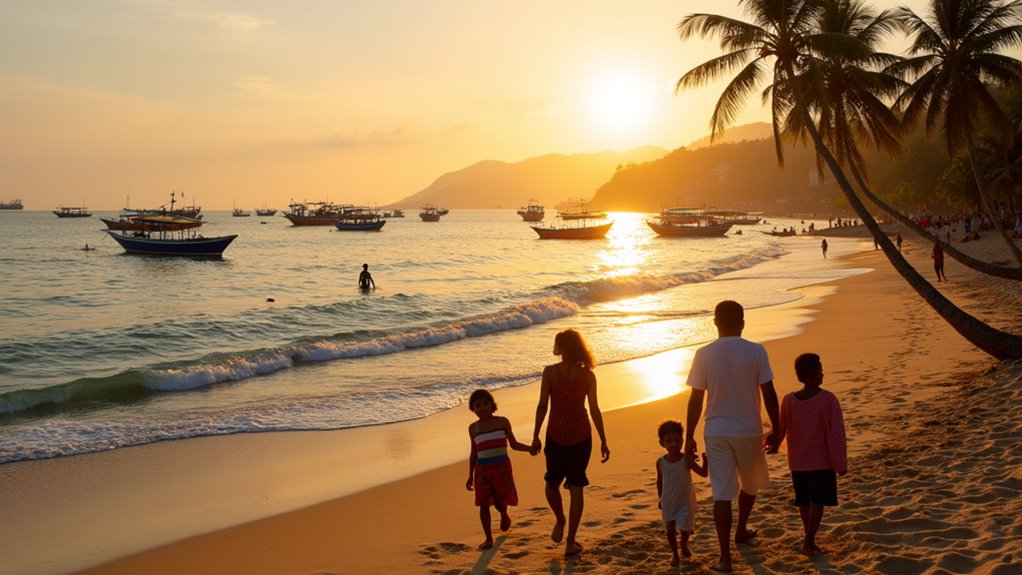
Sri Lanka’s political landscape underwent a seismic shift in late 2024 when Anura Kumara Dissanayake of the National People’s Power (NPP) alliance won the presidency and secured a parliamentary majority. This marked a decisive break from traditional ruling parties, reflecting public frustration with the status quo.
While the NPP maintained dominance in the May 2025 local elections, their reduced vote share hints at challenges ahead. The government faces immense pressure to deliver on promises while managing IMF constraints and debt restructuring obligations.
President Dissanayake has pledged to tackle corruption and human rights issues, including abolishing the controversial Prevention of Terrorism Act. However, the administration hasn’t supported accountability for civil war violations, despite UN oversight being extended in October 2024. This controversial law has been used to target Tamil and Muslim communities with arbitrary detention and threats.
For travelers, this political shift offers stability but with ongoing economic challenges.
Despite its stunning landscapes and attractions, Sri Lanka presents significant road safety challenges for travelers. The country records over 2,500 road fatalities annually, with April and December being particularly dangerous months during nationwide celebrations. Recent data shows that 592 Sri Lankans died in road accidents as of April 2, 2025.
Beautiful Sri Lanka hides a darker reality: 2,500+ annual road deaths, with holiday periods in April and December proving deadliest for travelers.
You’ll notice passenger buses pose special risks due to their size and passenger loads.
When traveling in Sri Lanka, remember these safety tips:
Consider travel insurance that covers medical evacuation, as serious accidents often result in significant injuries requiring extensive care.
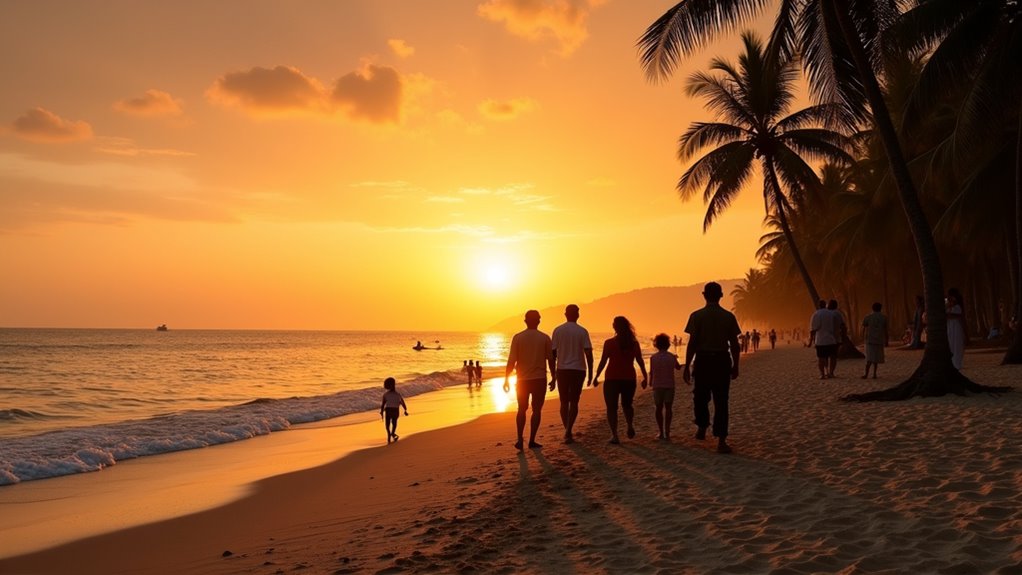
While the terrorism landscape in Sri Lanka has particularly improved in recent years, you’ll still encounter security measures reflecting past concerns. No terrorism-linked fatalities were recorded in 2024, marking a period of relative peace despite ongoing political challenges. This follows the global trend where terrorism is concentrated in just ten countries accounting for 87% of all terrorism deaths worldwide.
You’ll notice security checkpoints at major tourist sites, hotels, and transportation hubs. The government maintains a blacklist of 15 organizations and 361 individuals linked to terrorism financing, regularly updating this list as threats evolve.
The Prevention of Terrorism Act remains in effect, though the new president has pledged to abolish it.
When visiting religious sites, be mindful of community tensions, especially at Hindu temples where disputes over land use have occurred. International travelers aren’t typically targeted, but staying vigilant is always advisable.
Staying safe in Sri Lanka requires a combination of common sense and cultural awareness as you navigate this beautiful island nation. While the country is generally welcoming, it’s wise to take precautions to guarantee your trip remains trouble-free.
Sri Lanka welcomes you with open arms, but sensible precautions ensure your journey remains as beautiful as the landscape.
Consider hiring local guides who can provide cultural context while enhancing your safety.
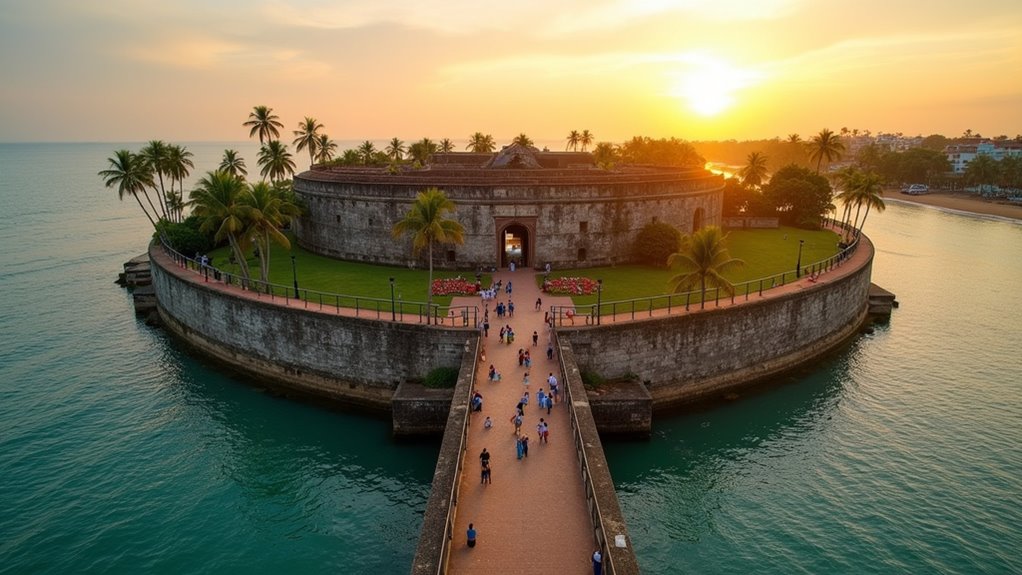
Sri Lanka offers numerous regions and cities that maintain excellent safety records for international travelers. The Cultural Triangle, including Anuradhapura, Polonnaruwa, and Sigiriya, provides secure access to historical treasures.
Kandy and Colombo, two major cities, are generally safe while offering affluent cultural experiences.
Beach lovers will find peace of mind at Unawatuna, Mirissa, and Weligama, where you can enjoy swimming, whale watching, and surfing without significant concerns.
For wildlife enthusiasts, Yala and Wilpattu National Parks offer safe safari experiences with proper guidance.
When seeking accommodations, established options like Pegasus Reef Hotel and FarCry in Wasgamuwa provide secure environments.
Galle, with its Dutch fort, and the tea plantations of Nuwara Eliya are additional destinations where you’ll feel comfortable exploring.
The eastern region resembling African safaris offers secure wildlife viewing opportunities with flat plains and bushland providing excellent visibility.
Despite its natural beauty and tourist appeal, Sri Lanka faces significant human rights challenges that travelers should be aware of. The country’s recent history includes ongoing issues with freedom of expression, minority rights, and civil liberties that impact both locals and visitors.
While these issues won’t directly impact most travelers, understanding them provides important context for your visit.
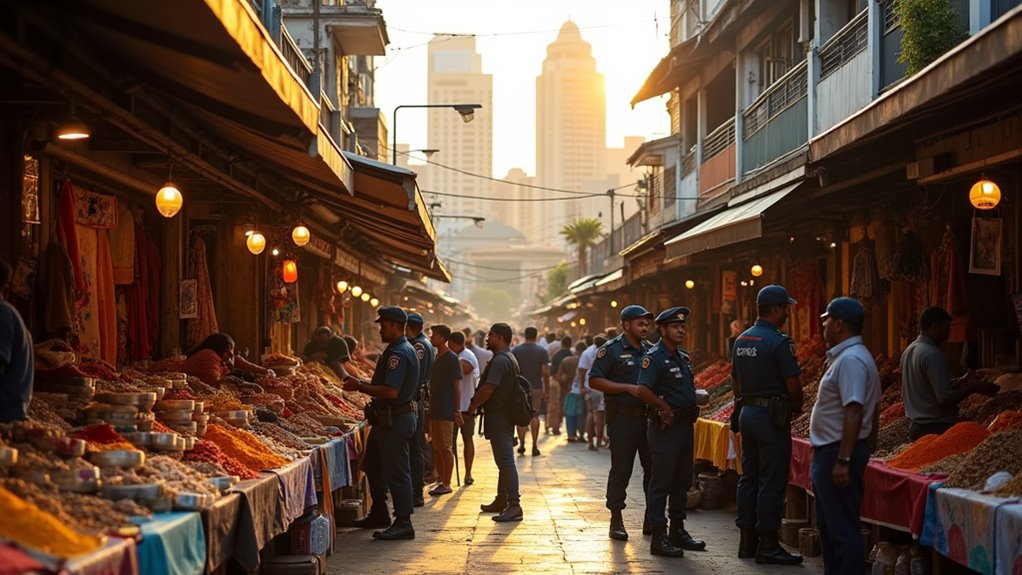
After enduring a severe economic crisis that culminated in a 2022 default, Sri Lanka’s economy has shown remarkable resilience with 5% growth in 2024. Tourism and construction have driven this recovery, with inflation turning negative at -4.2% in early 2025.
You’ll find the economic situation vastly improved since the crisis peak, with foreign reserves now at $6.5 billion and an IMF-backed reform program underway. The Central Bank has reduced policy rates, stimulating commercial lending and credit growth. The Sri Lankan rupee has appreciated by 19.4% against the US dollar since end-2022.
While visiting, you’ll likely notice stabilizing prices and improved business conditions. Though economic volatility persists, with GDP projected to slightly decline in 2025, the overall trajectory is positive.
This economic stabilization has directly enhanced traveler safety by reducing social tensions that peaked during the crisis.
You’ll find Sri Lanka ironically encapsulates both tranquility and tension in one teardrop-shaped package. While you’re admiring ancient temples, the country’s recent political turbulence might be reshaping nearby streets. Don’t let statistics fool you—Sri Lanka isn’t perfectly safe, but it’s far from dangerous. Take standard precautions, stay informed about local developments, and you’ll likely return home with nothing but photographs and memories.